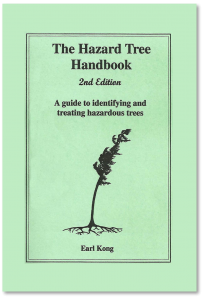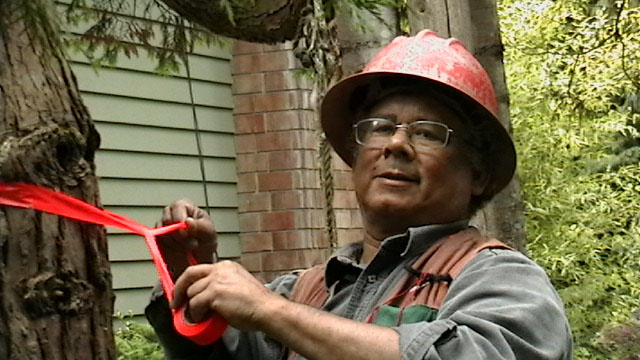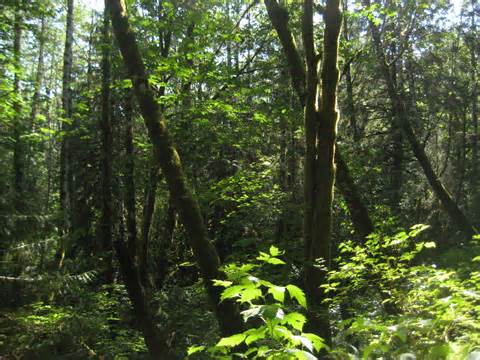Harm caused by defective trees is preventable. Usually, someone could have done something because trees usually show some indication when they are less than sound.
Some trees lifespan is about the same as humans. Trees get injured, they get sick and die just like humans. Damage to trees, as well as decay, threatens their structural integrity.
More homes are being built among trees and more people are visiting forests, parks and camps. Failed trees are offered more and more human targets. Failed tree incidents are on the rise, and they can be prevented.
The information presented here can be used to predict with some certainty which trees under which circumstance are failing.
THE HAZARD TREE HANDBOOK
 Excerpts from the book:
Excerpts from the book:
Damage from tree failure is preventable. In most cases, something can be done to prevent the failure and damage.
The same factors affecting trees in the wilderness continue to affect them when humans are present, furthermore, we create additional factors that cause trees to become less than safe.
Wind is the primary cause of tree failure. Winds with high velocity can cause failure in perfectly healthy trees.
Dead trees deteriorate until they fall.
In some cases, we may have to contact a neighbor regarding a tree posing a threat from across property lines.
Large trees within striking distance of a structure or human activity should be checked for these signs routinely.
A hazard tree plan promotes healthy trees by removing the defective, hazardous trees; and replaces them with healthy, non-threatening trees.
FREQUENTLY ASKED QUESTIONS
ABOUT THE AUTHOR:
 Earl Kong has a Bachelor of Science degree in Forest Management from Oregon State University and 40 years experience evaluating trees in Alaska, Idaho, Montana, Washington, and Oregon.
Earl Kong has a Bachelor of Science degree in Forest Management from Oregon State University and 40 years experience evaluating trees in Alaska, Idaho, Montana, Washington, and Oregon.
He has written articles on the subject for “Camping” magazine and is a member of the ‘Society of American Foresters”.
He presently works as a consulting forester.



![150842_1501537185677_7638252_n[1]](https://www.hazardtreehandbook.com/wp-content/uploads/2014/06/150842_1501537185677_7638252_n1.jpg)
![77187_1501561066274_5489082_n[1]](https://www.hazardtreehandbook.com/wp-content/uploads/2014/06/77187_1501561066274_5489082_n1.jpg)
![76800_1501536705665_116717_n[1]](https://www.hazardtreehandbook.com/wp-content/uploads/2014/06/76800_1501536705665_116717_n1.jpg)
![74798_1501532105550_5264587_n[2]](https://www.hazardtreehandbook.com/wp-content/uploads/2014/06/74798_1501532105550_5264587_n2.jpg)
![150264_1501536065649_4659888_n[1]](https://www.hazardtreehandbook.com/wp-content/uploads/2014/06/150264_1501536065649_4659888_n1.jpg)
![155202_1501536545661_7137588_n[1]](https://www.hazardtreehandbook.com/wp-content/uploads/2014/06/155202_1501536545661_7137588_n1.jpg)
![156165_1501532425558_5948960_n[1]](https://www.hazardtreehandbook.com/wp-content/uploads/2014/06/156165_1501532425558_5948960_n1.jpg)